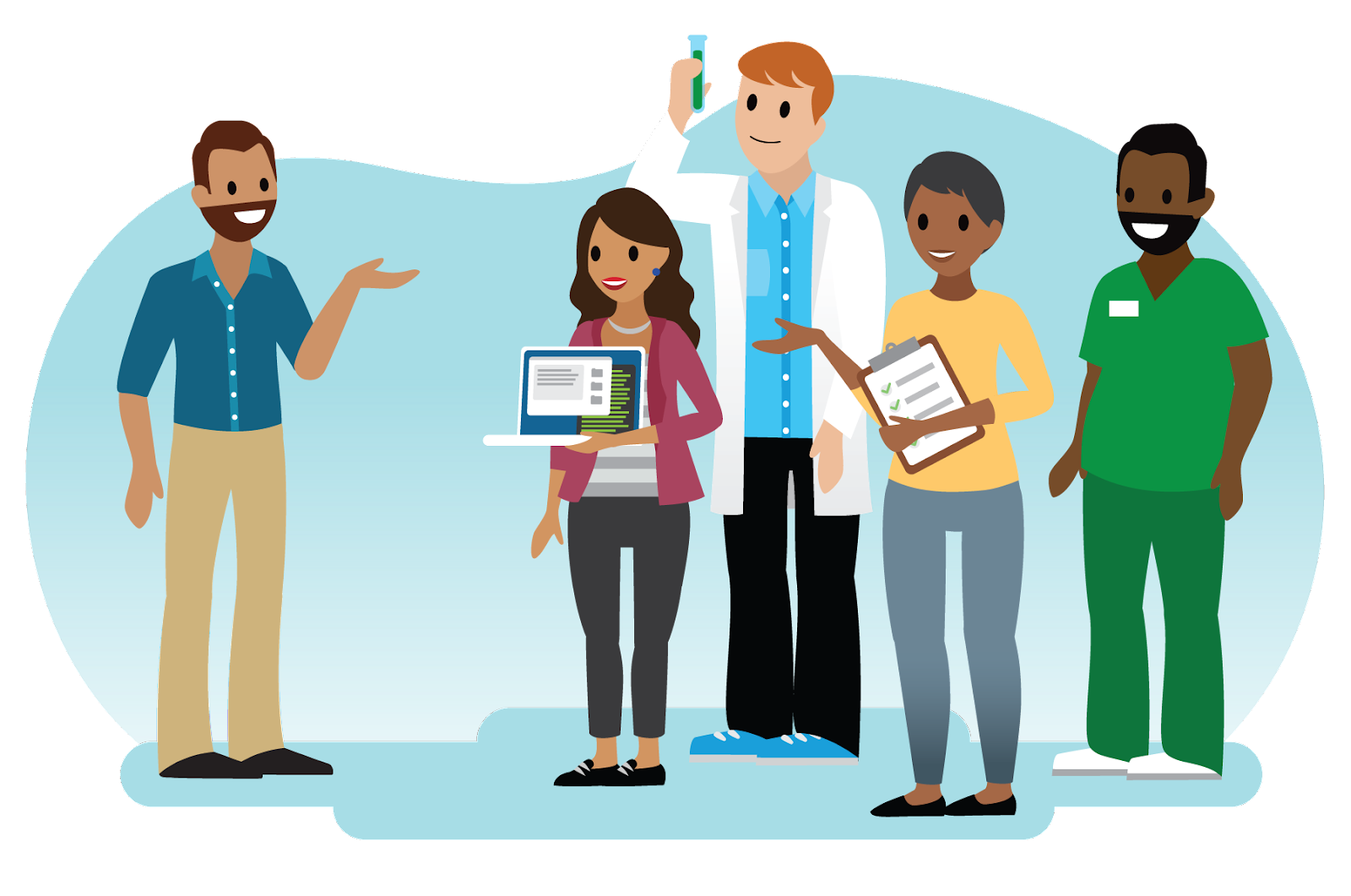Learn about Public Sector Health Roles and Audiences
Learning Objectives
After completing this unit, you’ll be able to:
- List key roles in public sector health.
- Classify public sector health audiences.
Meet the Heroes
People who work in public sector health do work that positively impacts millions of people, especially the most vulnerable members of our society. Let’s get to know these roles.
-
Community health workers and social workers care for individuals in need of personalized services.
-
Administrators oversee operations and delivery of services.
-
Community relations people explain health messages to the public.
-
Doctors, nurses, and other healthcare providers provide medical services to people in need.
-
Health inspectors ensure that public spaces, especially restaurants, maintain cleanliness and cooking standards to prevent food borne illnesses and germ spreading.
-
Epidemiologists investigate patterns and causes of disease and injury.
-
IT workers create and maintain the digital networks that support the work of public health workers.

Together, this group discovers, treats, and informs the public on how to be as healthy as possible.
Public Sector Health Audiences
Public health organizations focus on these primary audiences to organize their services.
Recipient |
Public Health Concerns |
|---|---|
Communities |
|
Healthcare organizations |
|
Employers |
|
Constituency wellness—which involves making sure that everyone in a community is healthy—requires all the different parts of public health to work together.
Consider the COVID-19 outbreak. From the start of the pandemic, public health departments identified the symptoms and risks that could arise. They then educated and empowered the public about the steps they can take to stay healthy with “Wash Your Hands” campaigns and personal protective equipment (PPE). They constantly collaborated with different departments, agencies, and community organizations to come up with solutions to solve these health challenges and keep people healthy.
This cycle of steps to identify risks and educate the public is repeated for every health issue. In the meantime, public health is facing some big challenges.
Make Wellness the Reality
Today, most individuals expect personalized, predictive, and easy-to-use products and services. However, many public health systems are outdated, inadequate, and hard to use.
When people don’t receive the level of service they expect from public health organizations, they withdraw the financial support required to sustain the organizations. Reduced funding, in turn, makes it nearly impossible for public health organizations to update and improve their technology and services. It’s a tough cycle to get out of.
To provide better services, public sector health focuses on resolving these major challenges.
- Organizations struggle to properly communicate with and inform the public about pressing health challenges.
- Constituents interact with many different providers of services, and often struggle to have their needs met.
- Providers are typically paid for providing services instead of getting paid for improving constituents’ outcomes.
- Treatments require a lengthy approval process with multiple checks.
Every step along the healthcare journey adds to better individual health and a stronger community. As tools, policy, and processes evolve, healthcare can become more accessible for everyone. We call that a win-win.
Resources